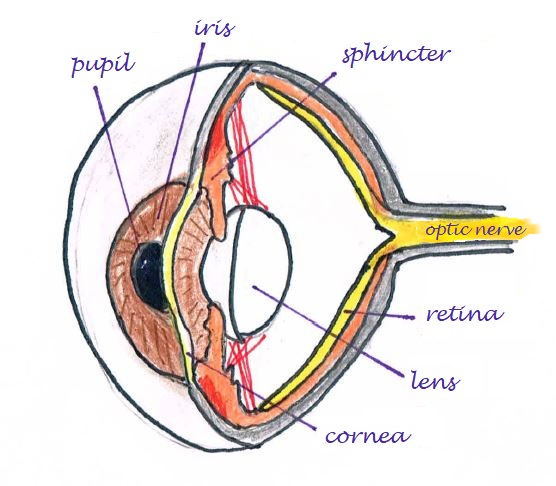The Human Eye
The human eye is a very complicated sensory organ. With it we can perceive information about our environment. Very simply we can say that it is made up of pupil, iris, sphincter, optic nerve, retina, lens and cornea. In the depiction below you can see the simplified anatomy of the human eye.

If light rays leave an object and enter the human eye, they are scattered - or more correctly diverged - at the aperture.
In the human eye the aperture consists of the pupil and the iris.
You can observe your own aperture at work if it gets suddenly very bright or very dark. The size of your pupil will change.
Its size adepts to the light intensity of your environment. After the light rays have passed through the pupil they meet the lens-system of the eye. There the light rays, which originated in an object, are refracted
in such a way that they create a clear image on the retina. It is a real image which is upside down and reversed left to right.
The sphincter is able to change the refractive power of the lens. That is the reason why we can see
close by and far away objects equally clearly.
The light rays that fall on the retina stimulate the light-sensitive nerve cells, which are part of the retina.
They create an electrical signal if they are stimulated. This signal is then transported along the optic nerve into the brain.
There the signals are processed and changed so that in the end we can see an image that is no longer upside down and reversed left to right.
The image that we perceive in our brains resembles the object we see just the right way.
